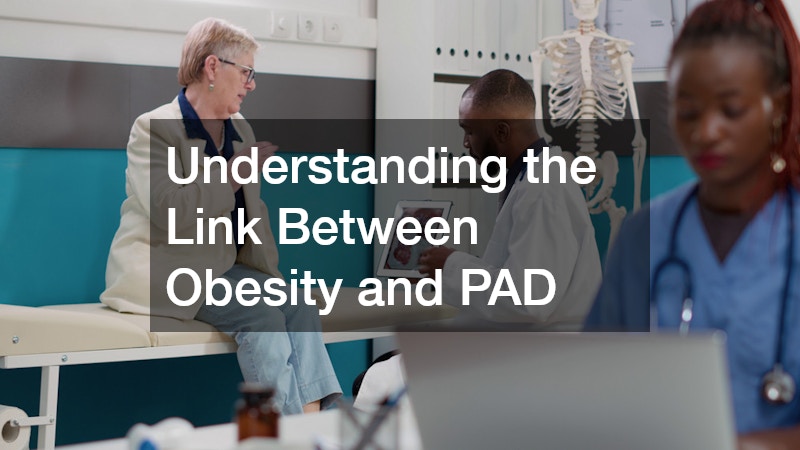Peripheral artery disease (PAD) is a common circulatory problem in which narrowed arteries reduce blood flow to the limbs. It’s essential to understand how lifestyle modifications can significantly alleviate the symptoms of this condition. Individuals with PAD can greatly benefit from changes in diet, exercise, stress management, and other lifestyle practices.
Nutrition and Dietary Adjustments
Nutrition plays a crucial role in managing peripheral artery disease effectively. A balanced diet that is low in saturated fats, cholesterol, and sodium can improve overall cardiovascular health. Emphasizing the intake of fruits, vegetables, whole grains, and lean proteins can aid in reducing the risk factors associated with PAD.
Incorporating omega-3 fatty acids found in fish can help reduce inflammation and improve blood circulation. Simultaneous reduction of processed foods and the consumption of heart-healthy oils, like olive oil, is recommended for better artery health. Maintaining a healthy weight through mindful eating is vital for individuals suffering from PAD.
Exercise and Physical Activity
Regular exercise is pivotal in the management of peripheral artery disease. Engaging in moderate-intensity activities, such as walking, cycling, or swimming, improves cardiovascular function and increases stamina. Patients often experience a reduction in PAD symptoms due to improved muscle efficiency and greater blood circulation.
Structured exercise programs are highly recommended for individuals with PAD, as they can lessen claudication, which is muscle pain caused by inadequate blood flow. Starting with short, manageable sessions and gradually increasing duration and intensity fosters sustainable health benefits. Moreover, exercise enhances the body’s ability to utilize oxygen more efficiently, improving overall mobility.
Smoking Cessation
Quitting smoking is crucial for individuals diagnosed with peripheral artery disease, as smoking exacerbates artery constriction. Cigarette smoke contains chemicals that damage arterial walls and hasten the progression of blood flow issues. PAD patients experience improved circulation and reduced pain upon successfully ceasing smoking.
Smokers are advised to seek support through cessation programs, which can include counseling, nicotine replacement therapies, or prescription medications. A strong support system of healthcare providers and loved ones can facilitate the quitting process. The health benefits of quitting smoking extend beyond PAD, promoting better overall respiratory and cardiac health.
Meditation and Mindfulness Practices
Practicing meditation and mindfulness can significantly decrease stress levels and positively influence peripheral artery disease management. These practices promote relaxation and can lower blood pressure, reducing strain on the arteries. PAD patients can incorporate short meditation sessions into their daily routine for a noticeable improvement in symptoms.
Mindfulness techniques encourage patients to remain present, helping reduce anxiety and improve mental focus. This mental clarity can translate into better decision-making regarding health and lifestyle choices. For consistent benefits, individuals are advised to integrate mindfulness exercises regularly into their lives.
Stress-Reducing Techniques
In addition to meditation, there are numerous stress-reducing techniques beneficial for managing peripheral artery disease. Deep breathing exercises, progressive muscle relaxation, and biofeedback have been shown to alleviate stress and promote relaxation. Regular practice of these techniques can reduce PAD symptoms by lowering stress-related hormones.
Techniques such as journaling or engaging in hobbies can also provide mental relief and redirect focus from stressors. Allocating time daily for stress-minimizing activities ensures they become an integral part of the individual’s lifestyle. When combined with other lifestyle changes, these techniques can lead to improved cardiovascular health.
The Role of Sleep in Stress Management
Quality sleep is a crucial component in managing stress and improving symptoms of peripheral artery disease. Adequate rest helps regulate hormones that control stress, offering restorative benefits crucial for arterial health. Patients with PAD are encouraged to establish a consistent sleep schedule to promote better health outcomes.
Improving sleep hygiene by creating a calm sleep environment and minimizing screen time before bed can enhance sleep quality. Techniques such as relaxing bedtime routines, including reading or taking a warm bath, can signal the body that it is time to wind down. By ensuring sufficient sleep, individuals may notice decreased nerve activity, leading to less arterial stress and better overall health.
Understanding the Link Between Obesity and PAD
Weight management is a critical factor in improving outcomes for patients with peripheral artery disease. Obesity exacerbates the risk of developing PAD by contributing to plaque build-up in arteries. Effective weight management can alleviate pressure on the cardiovascular system, reducing the severity of PAD symptoms.
Individuals with increased body weight often experience intensified symptoms such as claudication or rest pain due to restricted blood flow. By understanding the direct impact of weight on artery health, patients can make informed decisions regarding lifestyle changes. A comprehensive weight management plan can help improve both quality of life and mobility in PAD patients.
Long-term Benefits of Weight Management on PAD
Effective weight management yields substantial long-term benefits for those with peripheral artery disease. Consistently maintaining a healthy weight can significantly alleviate the burden on the cardiovascular system, enhancing arterial function. Weight management reduces the risk of complications and improves survival rates for PAD patients.
Managing peripheral artery disease through lifestyle changes is both practical and effective. Nutrition, exercise, smoking cessation, stress management, and weight control are integral components in alleviating symptoms and enhancing the quality of life for PAD patients. By making informed, sustainable lifestyle changes, individuals with PAD can significantly improve their health outcomes and live a more fulfilling life.




